AHAs in a Routine
While we don’t talk about acids in skincare all that much, they can be an important addition to any routine when used infrequently and at a pH that is just slightly more acidic than skin. The two main types of acids are AHAs (alpha hydroxy acids) and BHAs (beta hydroxy acids). The biggest difference is how they work on skin to assist with sloughing off dead skin cells.
AHAs or alpha hydroxy acids are water soluble and work on the skin’s surface to loosen the tension between the topical layers of dead skin cells. They tend to be preferred for those with more sensitive skin because they are gentler at exfoliating and can be hydrating. If you are unsure of what constitutes as an AHA, think of glycolic, lactic, malic and citric acids. All of these can be found in many skincare products that are formulated for “cellular renewal” and that have the traditional “anti-aging” effects on skin. This can be marketed as products that brighten the complexion, reduce pore size, target hyperpigmentation and provide a change to texture.
AHAs work because they soften or “dissolve” the surface layers of dead skin cells allowing the newer layers to be visible, showing a more youthful appearance to skin. The name of the game with all exfoliants is to encourage a healthy cellular turnover thus allowing your hydrators to penetrate deeper into the dermis for intense hydration and repair, and AHAs are no different.
Two important things to remember when using an AHA is to not use it alongside a retinol and to wear your SPF daily. Because both AHAs and retinols are considered acids, they too exfoliate skin, but to a different degree. It is important to keep your exfoliation to a once-a-week ritual to keep skin’s pH from swaying too much. When we over-exfoliate, our skin can become excessively parched, which can show up as red, inflamed and reactive or sensitive, think topically dry skin with excess oil production and a red undertone.
If you want to shake up your routine, we like to incorporate AHAs when the seasons change. By adding in specific AHA prior to your gentle weekly exfoliant, it can enhance the effectiveness of your exfoliants and better preps the skin for deeper penetration of our nutrient dense hydrators.
One of my favorite ways to incorporate an AHA into my spring routine is to slice an organic strawberry in half and gently sweep it over freshly cleansed skin. The pH of an organic strawberry can vary between 3 and 3.9 which is slightly more acidic than skin’s preferred pH of 4.5 to 6.5. This slight acidity is what dissolves or loosens a few extra layers of dead skin cells allowing them to slough off easily and effectively. From there I rinse skin with warm water and mix up a creamy paste of our Chamomile & Oats Clay Facial Mask applying to face, neck and chest, allowing it to dry for 1-2 minutes or until the perimeter of the mask is dry.
Another great option as you move from spring into summer is to use our Daily Face Polish as a mini mask before our Chamomile & Oats Clay Facial Mask. While this product is pH balanced for skin, when you apply to dry skin and let it sit for 1-2 minutes, the AHAs in honey do the same job as an organic strawberry, encouraging a healthy cellular turnover and allowing your hydrators to penetrate deeper.
The last option I love is when we transition from late summer to early fall. Simply scoop and apply one tablespoon of plain Greek yogurt to face, neck and chest as a 2-minute mini mask before rinsing and applying our Chamomile & Oats Clay Facial Mask. This option has a pH between 3.9 to 4.5 so it is a gentler option as the dermis begins to become dry after the humid and sticky summer months.
Keep in mind that because I am incorporating an AHA before my clay mask, I am shortening the dry time of the mask to under 5 minutes. Because the AHAs dissolve many layers of dead skin cells I need less dry time for my mask to have the same effect. It is important to know that I am only incorporating our Chamomile & Oats Clay Facial Mask after the use of these AHAs and not our Red Clay Facial Mask. The reason is because that particular facial mask is formulated to naturally be rich in AHAs and vitamin C and is intended as a once-a-month in place of any other exfoliants or AHAs in your routine.
Now that you know how to incorporate AHAs into your routine, remember that skin is eager to accept intense hydrators. This means that after rinsing the mask with warm water apply and layer your favorite rich hydrators. My routine consists of applying our Evening Rose Facial Serum, Carrot & Rose Eye Repair and our Lavender Cold Cream, layered in that order.
https://www.ncbi.nlm.nih.gov/pmc/articles/PMC7277581/
https://www.clemson.edu/extension/food/food2market/documents/ph_of_common_foods.pdf
https://foodservice.cabotcheese.coop/project/117-5lb-10-plain-greek-style-yogurt/
https://www.byrdie.com/guide-to-citric-acid-5093236


